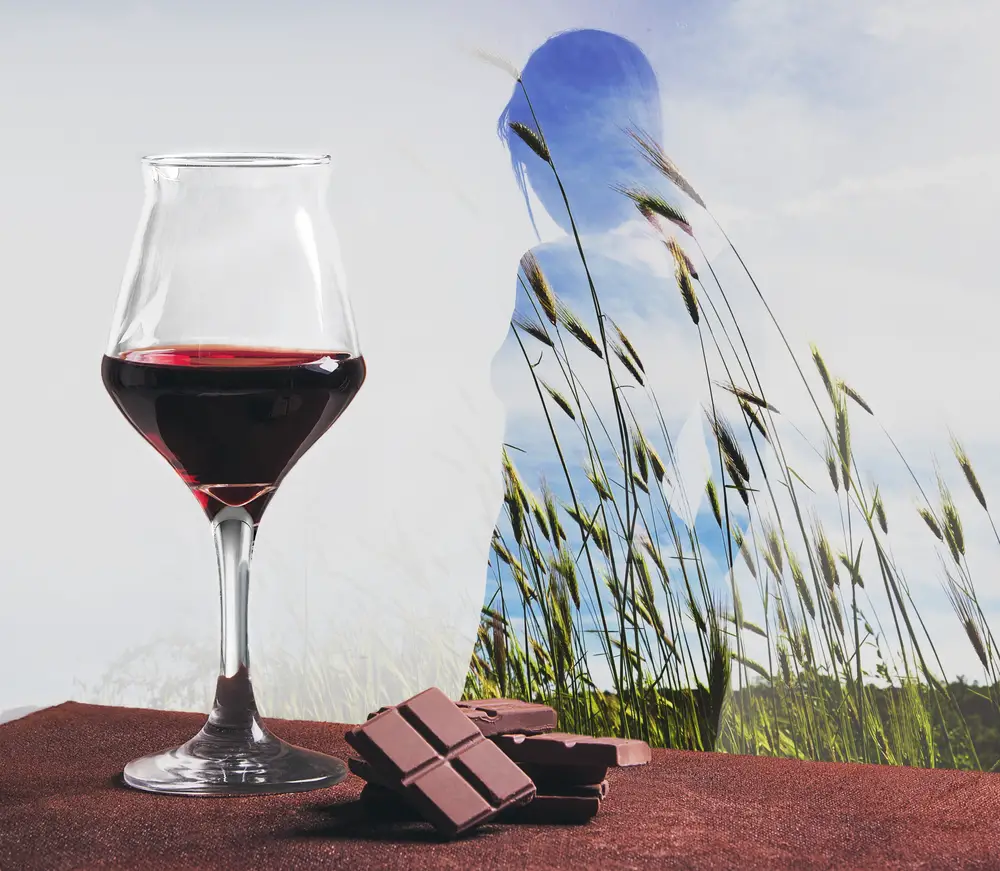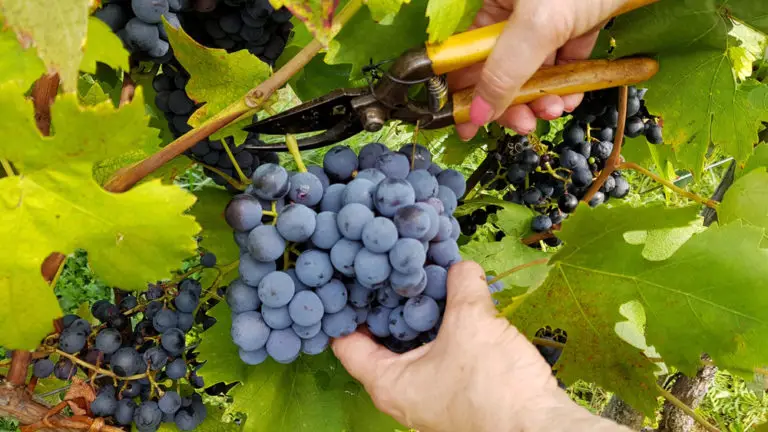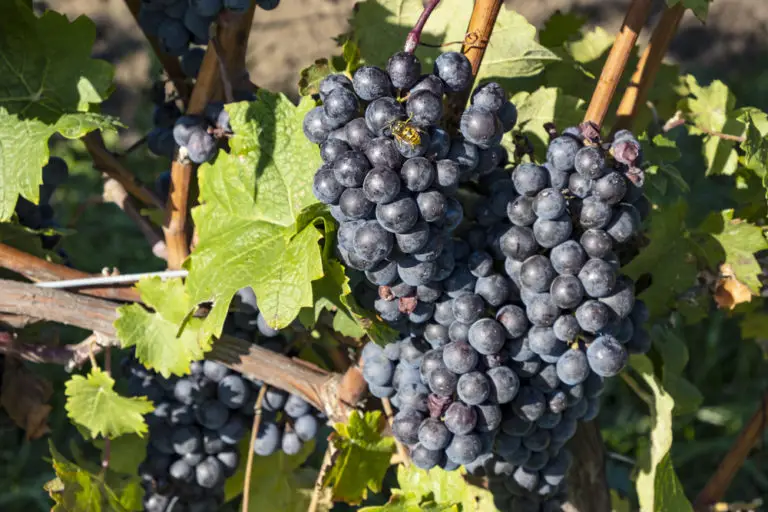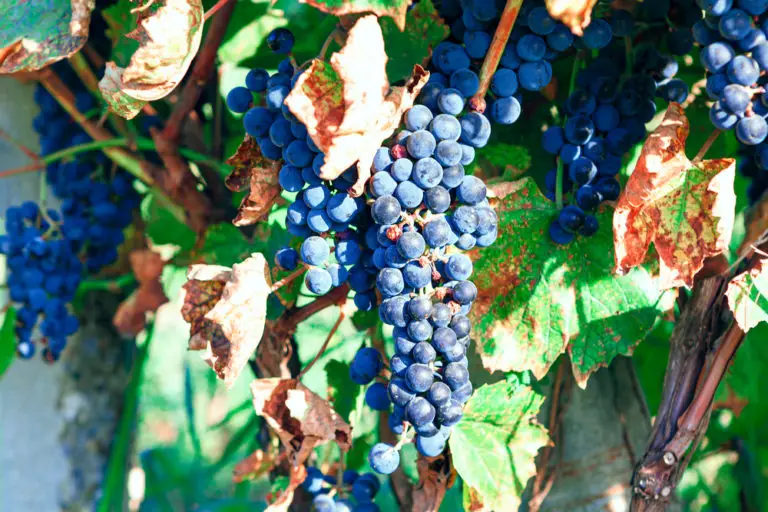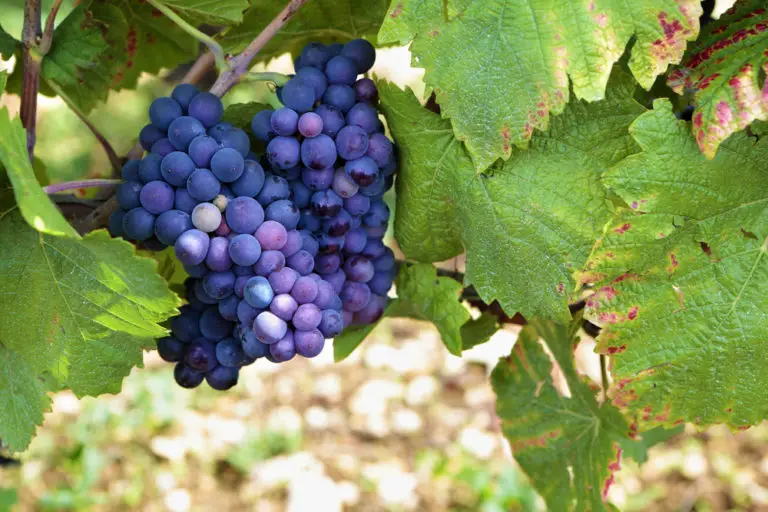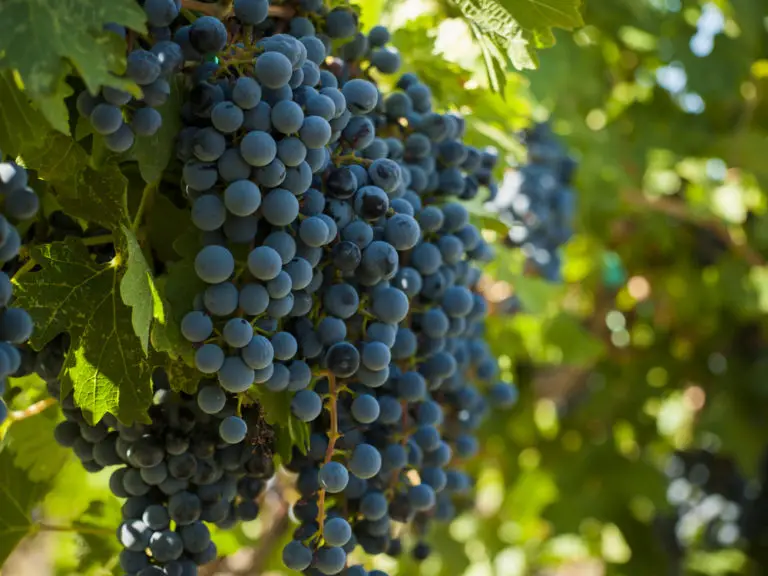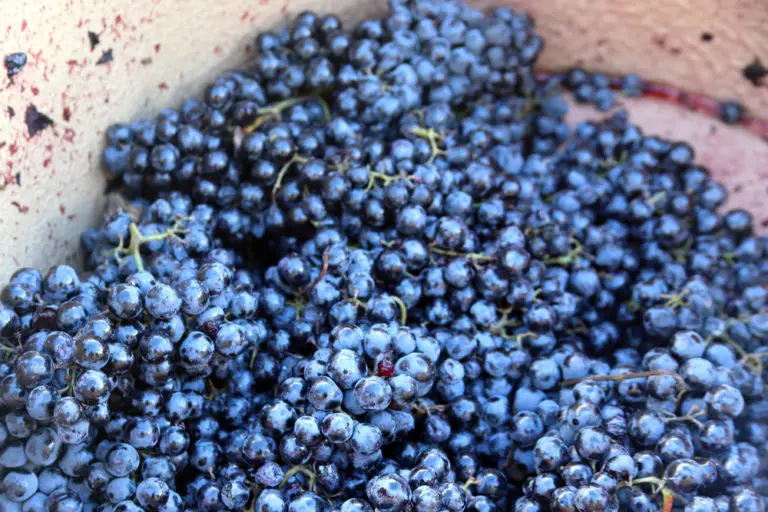Dessert Wine for Beginners (Everything You Need to Know)
Sweet wine or dessert wine is a sweet, full-bodied wine that must have a minimum sugar content of 40 g/l of wine according to EU regulation. (1)
Outside the EU, however, sweet wines usually contain between 20 and several hundred grams of residual sugar per liter of wine and are usually served at the end of a meal, as they are here.
The characteristic of a sweet or dessert wine is the presence of residual sweetness (2). In addition to the high sugar content, all sweet wines also have a very high alcohol content of 12.5 to 22 percent by volume.
- What is Dessert Wine?
- Dessert Wine Characteristics
- Dessert Wine Varieties
- Dessert Wine’s Ageability
- How Should Dessert Wine be Served?
- Known Regional Dessert Wines
- How is Dessert Wine Made?
- History of Dessert Wine
What is Dessert Wine?
Dessert wine is a red or white wine with high residual sweetness and is therefore often served as a sweet wine with dessert. A dessert wine can of course also be drunk as an aperitif.
Dessert wines come in various degrees of sweetness and range from red wines to white wines. They are excellent as accompaniments to dessert or as dessert wines themselves.
It’s also worth noting that dessert wines should be served in small wine glasses, just as you would sip a whiskey or bourbon.
If you want sweet dessert wine, we want you to have it. When reading wine labels, look for the following wine terms:
- Dolce
- Dulce
- Doux
- Moelleux
On the other hand, if you do not want a full-on sugar bomb on your palate, opt for wines that have just a hint of sweetness. Look for the following designations:
- Amabile
- Semi-dry
- Demi-Sec
- Semi-Sec
Fortified Wine vs. Dessert Wine
Sweet wine is sometimes equated with fortified wine. However, fortified wine must have at least 15% vol. Alcohol is characterized by a creamier and somewhat thicker consistency.
The creamier texture of fortified wines results from the addition of must concentrate, which makes the wines appear somewhat thicker or viscous.
Fortified wines, unlike dessert wines, undergo mutage. That’s when the conversion of the sugar from the grapes into alcohol is interrupted by the addition of high-proof alcohol. The alcoholic fermentation, for which yeast fungi are responsible, is stopped.
The effect is twofold: since not all of the sugar is converted, the end product is sweeter, and the resulting reduced alcohol content is increased again by the addition of high-proof alcohol. The whole thing is easier to accomplish than the production of dessert wine and therefore cheaper!
Dessert Wine Characteristics
What determines a wine’s sweetness? Wines can be dry, medium-dry, medium, or sweet. Residual sugar determines this classification.
During the fermentation process, yeast consumes sugar and converts it to alcohol. After fermentation is complete, the remaining sugar determines the wine’s sweetness.
Wines with high levels of residual sugar tend to be lower in alcohol unless they are fortified. Winemakers measure residual sugar as grams/liter (g/L).
Very sweet wines weigh in at 45 g/L and above while dry wines have around 2.5 g/L or less.
Other wine components such as acidity, temperature, tannins, and alcohol can all affect sweetness. For instance, acidity tempers sweetness, while alcohol increases it (3).
Dessert Wine Varieties
Sweet wines are made from grapes of all varieties, red or white. Here is a handful of the most common with some associated with the different types of sweet wines:
- Semillon (main grape variety for Bordeaux Sauternes)
- Viognier
- Chardonnay
- Chenin Blanc (Vouvray or Quarts de Chaume, Savennieres – Loire Valley)
- Riesling dessert wine (Alsace and Rheingau)
- Gewurztraminer (Alsace)
- Muscat/Moscato dessert wine (Muscato d’Asti, Muscat d’Alsace, Muscat-de-Beaumes-de-Venise, Muscat Canelli)
- Trebbiano (Vin Santo)
- Furmint (main grape variety for the Hungarian Tokaji aszu)
- Grenache (Banyuls, Maury)
- Zinfandel dessert wine(late harvest Zinfandel/California)
Sparkling Dessert Wine
Sweet sparkling dessert wines are either sweetened during dosage or made from aromatic grapes such as Muscat (also called Moscato dessert wines). If the wine is sweetened by dosage, it is labeled with one of several terms for sweet:
- Dry Prosecco (also called Valdobbiadene)
- Demi-Sec and Doux sparkling wines
- Amabile and Dolce Italian sparkling wines
- Brachetto d’Acqui (a rosé wine)
- Asti Spumante (made with Moscato)
Moscato
Moscato is a widely planted white grape variety known in France as Muscat Blanc à Petits Grains.
Like most grape varieties, it is known by many names, such as Moscato Bianco, Moscato di Canelli, and Moscadello.
The most famous wines made from this variety are Moscato d’Asti and Asti Spumante DOCG, a sparkling dessert wine.
Lambrusco
Lambrusco is an Italian red grape variety and the wine is made from it. Lambrusco is mainly grown in the region Emilia-Romagna.
The sparkling dessert wine can also be dry but is usually sweet. As a rule, Lambrusco should be drunk young.
Lightly Sweet Dessert Wine
Slightly sweet wines are refreshingly sweet; perfect for a warm afternoon. Many of these sweet wines pair well with spicy foods such as Indian or Southeast Asian cuisine.
Light sweet wines are best drunk as soon after harvest as possible, except for rare examples like German Riesling dessert wine, which age very well!
Gewürztraminer
A noble-grape varietal German dessert wine, Gewurztraminer is a sweetly aromatic wine that comes from Alsace in France.
Because of its beautiful floral and lychee notes, this delicious white wine pairs perfectly with any dessert where lychee, pear, or peach is one of the main ingredients.
Riesling
This fruity sparkling wine from Germany ranges from dry to sweet. Its natural acidity softens the sweet taste, making it a delicious accompaniment to an after-meal cheese course or cheesecake.
If you have a sweeter Riesling from the Spatlese, you can drink it with citrus-based dessert pairing like lemon cake or lemon cream pie.
Chenin Blanc
Chenin Blanc, grown in its numerous Loire Valley appellations, is another grape variety for everyone, but whether dry or sweet, light or full, still or sparkling, it is always very characteristically Chenin.
Vouvray, perhaps the most famous Loire Valley appellation for Chenin sweet French wine, can range from dry to sweet even in this one region; the terms demi-sec, moelleux, and liquereux indicate the presence of residual sugar.
Müller-Thurgau
A not-so-popular variety, also a German dessert wine and also found in parts of Oregon, with floral aromas and slightly lighter acidity. A classic porch wine and a popular accompaniment to sausages.
A cross between Riesling and Madeleine Royal, the vines are known to be hyper-productive, making most wines a bit boring. Nevertheless, quality-conscious wineries offer Muller-Thurgau with the same complexity as a good Riesling and a good basis for sweet wines.
Richly Sweet Dessert Wine
Sweet rich wines are made from the highest quality grapes in a non-fortified style. Many of these wines can age over 50 years because sweetness and acidity retain their fresh flavor.
Examples of these types of sweet wines can be found in Hungarian Tokaji, Sauternes, and a German Trockenbeerenauslese.
Sweet Red Dessert Wine
To many wine lovers, sweet red dessert wine initially seems to taste somewhat less sweet than white wine with the same residual sugar content. The explanation for this is simple: The tannins contained in red wine neutralize the sweetness of sweet red wine.
With intense aromas, lots of fruit, but also cocoa, vanilla, or even balsamic notes, they beguile the palate. For a chocolatey dessert or as a digestif after a meal, sweet red wine is the ideal choice.
Choose a full-bodied, juicy cuvée with dark berry aromas or reach for the noble sweet Pinot Noir Beerenauslese with plum aroma and toasted notes from the barrique.
Freisa
Freisa is an Idiosyncratic Italian red dessert wine grape variety and the wine made from it in Piedmont, sometimes slightly sweet in strange contrast to the acidic, sometimes tannic grape.
The best known are the two wines with DOC status Freisa d’Asti and Freisa di Chieri, while Freisa of Alba (without DOC ) is considered the best.
Brachetto d’Acqui
Brachetto d’Acqui, or simply Acqui, is a beautiful Italian red dessert wine from the provinces of Alessandria and Asti in Piedmont, which received DOCG status in 1996.
It is available as a still wine, a strong sparkling wine (spumante), or a dessert wine (passito). 97-100% of the wine is made from the Brachetto grape variety.
Addition of other grape varieties permitted for the Piedmont region is permitted from 0-3%.
The wine may only be sold from 1 October of the year following the year of harvest. It is intended for early consumption after purchase.
Recioto della Valpolicella
Taking its cue from the famous red dessert wines of this region in Veneto, Recioto della Valpolicella is a sweet red wine made from dried Corvina, Rondinella, and Molinara grapes.
Traditionally, the grapes are dried on straw mats or in so-called fruttai, which ensures that air circulates through the grapes during the drying process to prevent mold from forming.
Recioto winemakers typically let the wine ferment until the alcohol level is around 14 percent, then chill the wine to stop fermentation and preserve the residual sugar.
Fortified Dessert Wine
In making fortified dessert wine, winemakers add neutral grape spirit, such as brandy, to wines during fermentation. This stops the process by killing sugar-consuming yeasts and adjusts the residual sugar to a high level of sweetness while increasing the alcohol content.
Examples of this process include Port from Portugal and Bantus, Muscat de St. Jean de Minerva, and Maury from the French region Languedoc-Russell.
Port
The popular port dessert wine is produced in the Portuguese Douro Valley. Its name comes from the port city of Porto, where the dessert wine was transported after production to be stored and made available for international trade.
Port wine is typically characterized by a light reddish-brown color – but white products are also made. They usually taste like sweet grapes on the palate.
Sherry
Spain is known for its dessert sherry – a fortified white wine that is created through an individual aging process and is usually made from the palomino grape. It uses what is known as the solera system:
In the barrel aging process, wines from different vintages are blended together and pass through several rows of barrels during their aging. Sherry inspires with a unique character and an aroma between almonds, yeast, walnut, and hazelnut.
Madeira
Similar to port dessert wines, the fermentation of Madeira wine is interrupted by the addition of high-proof brandy. As a result, not all the sugar is fermented and the wine retains an appropriate sweetness.
The alcohol content is between 17 and 22 percent. The special feature of Madeira Wine is that it is stored for five to eight months at an elevated temperature of up to 75 degrees Celsius.
Vin Doux Naturel (VDN)
Vin doux naturel is a type of sweet wine grape that has a natural sweetness. It is produced by a slight enrichment in which a spirit, usually consisting of brandy, is added to the wine before the end of the fermentation process.
The natural sweetness of the wine is produced by the process of mutage. This type of wine also contains residual grape sugar. Vin doux naturel wines are often linked with the Languedoc-Roussillon region of France, where the grapes needed to make the wine are grown.
Dessert Wine’s Ageability
The sweeter the wine, the easier it is to keep for longer. The high sugar content has a preservative effect. Determining the shelf life of a wine is not an exact science, but there are four characteristics that oenophiles generally look for to determine aging potential.
- Acidity: wine loses acidity over time, so wines with higher acidity tend to have a longer shelf life.
- Tannin: A wine with balanced tannins will become “smoother” over time as they break down, so wines with higher tannins generally age better. But be careful: if the wine is not balanced to begin with, it will not get better over time.
- Alcohol: The role of alcohol in aging is a mystery. In most cases, it is the main catalyst for wine degradation, but in higher amounts, it also acts as a stabilizer. Therefore, wines with an alcohol content of less than 13.5% ( ABV ) or more than 15% (as is the case with fortified wines and some dry white wines) have better aging potential.
- Sugar: Residual sugar is an often overlooked component as dry wines like to age. However, the longest-lived wines tend to be sweet wines, such as Sauternes and Riesling.
Common sweet wines with good ageability include: Hungarian Tokaji can be expected to age up to 30 years, while Riesling and French Sauternes can age between 15 and 25 years.
How Should Dessert Wine Be Served?
Stemware
The glass for dessert wine (e.g. Sauternes, Beerenauslese, etc.) should be served in a short glass that has a rim toward the top.
This avoids accentuating the already high residual sweetness of the wine. The small goblet deliberately concentrates the taste on the tip of the tongue.
Temperature
High-quality good sweet wines should never be served too cold, or they may appear discordant.
However, if a sweet wine seems too sweet, a short chill can tone down the sweetness.
The optimal drinking temperature for sweet wine is between 12 and 16 °C.
Food Pairings
There are no hard and fast rules for food and dessert wine pairings. However, a few guidelines can help.
- Salty food contrasts nicely with sticky wine.
- If you are trying to pair a sweet wine or dessert wine with a dessert, it is best to pair a sweet wine with a dessert that is less sugary. For example, try a honey wine Muscat Canelli along with an apple pie.
- Pair full-bodied wines with full-bodied foods.
Known Regional Dessert Wines
Well-known products traded as dessert wines or sweet wines are known by other types of sweet wine.
- Germany; Wines by natural concentration: Auslese, Beerenauslese, Trockenbeerenauslese, Eiswein.
- Austria; Wines by natural concentration: Ausbruch, Auslese, Beerenauslese, Trockenbeerenauslese, Eiswein, Strohwein.
- Italy; Wines by natural concentration: Vin Santo and Recioto such as (Recioto di Gambellara, Recioto di Soave and Recioto della Valpolicella).
- Wine, by mutage: Marsala.
- Hungary; Wine by natural concentration: Tokaji
- France; Wines by natural concentration:
- Alsace: Vendanges tardives or Sélection des grains nobles (comes close to the German variation of a Beerenauslese);
- Bordeaux: Sauternes and Barsac.
- Jura: Vin de Paille.
- Jurançon: Vendanges tardives.
- Liqueur wines (fortified sweet wines) are declared as Vin Doux Naturel in France, examples are: Rivesaltes, Banyuls, Maury, Muscat de Beaumes-de-Venise, Muscat de Frontignan or Muscat de Rivesaltes.
- Spain; Wine by mutage: sherry
- Portugal; Wines by mutage: Port, Madeira, Moscatel de Setubal, Moscatel de Duoro.
Eiswein
A German dessert wine also known as ice wine, these wines are made from grapes that freeze naturally on the vine. Winemakers pick the grapes while they are frozen and press them to extract the juice.
This minimizes the water content and produces a sweet, sugary, concentrated juice that becomes a delicious, honey-like wine. Because the juice is so concentrated, the yield of icewine is often low, so prices for these gems are a bit higher than for other wines.
Beerenauslese
Beerenauslese (BA) is a predicate for quality German dessert wines. Beerenauslese wines are a rare and intensely flavored noble sweet wine specialty with concentrated natural sweetness and often a deep golden color.
Good dessert wine can usually be stored for a long time and, if properly stored, can often age for decades in the bottle. Characteristic is the rich sweetness with low alcohol content and a fine honey tone.
Passito
Passito wine is an Italian process made by selectively drying healthy grapes after harvest, usually on straw mats or by hanging the grapes from rafters.
This dehydrates the grapes, concentrates the remaining sugars and flavors, and produces a sweet wine with clean and often raisin-like flavors.
The passito process yields less wine than traditional winemaking because the juice is essentially extracted from the raisins, making these wines more expensive than their barrel-aged counterparts.
Moscato d’Asti
Moscato d’Asti is a sweet Italian white wine from the provinces of Asti, Cuneo, and Alessandria in Piedmont. Moscato d’Asti has the status of a DOCG.
Common flavors found include sweet aromas of peaches, fresh grapes, orange blossom, and crisp lemons. The taste prickles on the tongue due to the acidity and light sparkling dessert wine nature.
Tokaji Aszú
Hungarian Tokaji (not to be confused with the Tokaj region) is best known for its aszú version, is a sweet rich wine made from late-harvested, shriveled, botrytis-infected grapes collected in containers called puttony.
These overly sweet, barrel-aged Tokaj aszú wines have low alcohol, a viscous taste, and are often very honeyed. A tiny amount of Tokaji Esszencia is also produced, made only from the sticky wine juice of the aszú grapes. It is possibly the sweetest wine in the world, is incredibly rare, can age for over a century, and is usually sold by the teaspoon.
Sauternes
This coveted (and often expensive) sweet French wine from the Sauternes region of France in Bordeaux and a popular dessert wine famous for its honeyed notes of apricot, peach, caramel, and toffee. Along with Tokaji Aszu from Hungary and Spatlese Rieslings from Germany, Sauternes is one of the “noble rot wines’ made from grapes infected with the fungus Botrytis cinerea.
The Douro
On the Douro Valley near the city of Porto in the beautiful wine country of Portugal, the grapes for the famous port dessert wine grow – and only there, if you interpret the term wine-legally exactly. During the fermentation process, brandy is added to the wines.
The alcoholic fermentation comes to a halt and a higher sugar content remains in the fortified wine. This explains the nuances of fruity sweetness that characterize many ports, although a good dessert wine with the necessary acidity and structure knows how to finely balance this.
Pantelleria
Passito di Pantelleria is grown on the island of Pantelleria between Sicily and Tunisia. A ripe, intensely golden, sweet wine made from Zibibbo grapes – also known as Muscat d’Alexandria A beautiful, fresh wine with an intense aroma of raisins, dried and candied fruits. A real delicacy from Sicily.
How is Dessert Wine Made?
What determines a wine’s sweetness? Types of dessert wines can be dry, medium-dry, medium, or sweet. Residual sugar determines this classification.
- During the fermentation process, yeast consumes sugar and converts it to alcohol.
- After fermentation is complete, the remaining sugar determines the wine’s sweetness.
- Wines with high levels of residual sugar tend to be lower in alcohol unless they are fortified.
- Winemakers measure residual sugar as grams/liter (g/L).
- Very sweet wines weigh in at 45 g/L and above while dry wines have around 2.5 g/L or less.
- Other wine components such as acidity, temperature, tannins, and alcohol can all affect sweetness. For instance, acidity tempers sweetness, while alcohol increases it.
Late Harvest
Late Harvest Wine is made from grapes that hang on the vine for an extended period of time after they have reached their peak ripeness.
This dehydrates the grapes and increases the sugar and alcohol content.
Muscat (also known as Moscato dessert wine), Vidal, and Riesling are some of the most popular types of late harvest wine.
Fortification
Alcohol is added to some dessert wines – a traditional method that goes back centuries. The alcohol, usually a distilled and neutral grape spirit, prevents the yeast from absorbing all the sugar content.
The end result is a robust and sweet wine. Popular dessert wine examples of fortified wines include port, Madeira, vermouth, and sherry.
Noble Rot
Also known as noble rot, botrytis cinerea is a spore-like fungus that attacks healthy grape clusters in the late autumn (4). It grows, feeding on the grape’s sugars. Damp nights and warming days helps to dry the grapes and prevents total decomposition.
The result yields wonderfully complex and very sweet dessert wines that can be found in Sauternes from Bordeaux, Hungarian Tokaji, and Auslese or Beerenauslese from Germany’s Rheingau region.
Ice Wine
Called Eiswein Ice wine is a special type of wine made from grapes that have been frozen on the vine. Because of this, this dessert wine can only be made in cold climates like Germany and Canada.
It comes in both red and white grape varieties, and you can pair the red version with chocolate dessert pairing and the white version with blue cheese and cheesecake.
Passito
Passito is a wine whose sweet wine grapes, after harvest, are dried on straw mats or wooden racks, so that their sugar content increases by evaporation of water. Only after this treatment are the grapes pressed.
Due to the high sugar content, the subsequent vinification usually results in a very heavy wine with a long storage life and an alcohol content of 14% or more.
Straw wines are produced in Italy (among the best known are the Amarone della Valpolicella and the Recioto from the Valpolicella region), but also in France (here among others in the Jura), Spain, Austria (e.g. Burgenland), and Cyprus (Commandaria).
History of Dessert Wine
The history of sweet wine is much older than that of dry wine (5). In ancient times, good wine had to be as sweet as possible. The Romans liked it that way, too. To enhance this, they concentrated the grape must by boiling it before fermentation.
It was often even mixed with honey, pepper, and other spices. Sweet “vinum” was not only a matter of taste, highly concentrated wine was also better protected against oxidation and vinegar burning (6).
Since distillation had not yet been invented, the Romans knew of no stronger drink than sweet wines (7). They have been popular to varying degrees throughout history.
In the 19th and early 20th centuries, it was considered chic to drink them, but after World War II came the big downturn. By the late 1950s, demand for Sauternes had declined so much that the classic white wine varieties were partially replaced by Cabernet Sauvignon and Merlot.
FAQ
What is considered a dessert wine?
A dessert wine is legally defined as a white or red wine with more than 14% alcohol by volume, which includes all fortified wines.
What is the difference between table wine and dessert wine?
Table wine is a grape wine with an alcohol content of 14% vol. or less. Wines between 14% and 24% ABV are called dessert wines.
Why is dessert wine so expensive?
Sweet wines are expensive because they’re difficult to make. Whether the grapes are shriveled on the vine to a glorious sweetness or laid out on straw mats to dry, the yields are tiny.
Should dessert wine be refrigerated?
Dessert wines – that is, white wines – are best served chilled, but not ice-cold, or the subtleties will be lost. 2. Ice wines should be treated like dessert white wines in general. Port wines are usually served at room temperature.
What is a sweet dessert wine called?
Wines with a high content of residual sugar go by the names: Sweet wine, Dessert wine, Fortified wine, or pudding wine.
Do dessert wines have more alcohol?
Sweet dessert wines tend to have less alcohol (around 8%) than dry red or white wines, fortified wines can get up to 14.5%.
How do you make a dessert wine?
Sweet wine comes from extra-sweet grapes! To make a sweet wine, fermentation is stopped before the yeast converts all the grape sugar into alcohol.
Is dessert wine high in sugar?
Yes! Dessert wines can contain a whopping 200 grams (or more) per liter. And while some liqueurs have been shown to actually have sugar added, dessert wines are sweetened by various processes.
Is Stella Rosa a dessert wine?
The original Stella Rosa was a half sweet, half fizzy Moscato d’Asti, followed by the Stella Rosa Rosso red dessert wine.
Is Pinot Noir a dessert wine?
While usually made into a dry wine, Pinot Noir has the good foundations to make a dessert wine. The flavors usually are very similar to Port.
Is Rose a dessert wine?
Contrary to popular belief, rosé isn’t just a dry wine. Depending on the type of red grapes used, it can be fruity or sweet.
Is Sauternes a dessert wine?
Yes, Sauternes is an excellent sweet French wine from the region of the same name Bordeaux.
Is Riesling a dessert wine?
Riesling has an excellent reputation worldwide because its natural acidity rounds out the desired sweetness and prevents the sometimes sticky wine when drinking that many other dessert wines.
Is Moscato a dessert wine?
Yes, Muscato or Muscato d’Asti is a heavy and very sweet dessert wine that is drunk especially in Italy and the basis of the well-known sparkling wine Asti Spumante.

